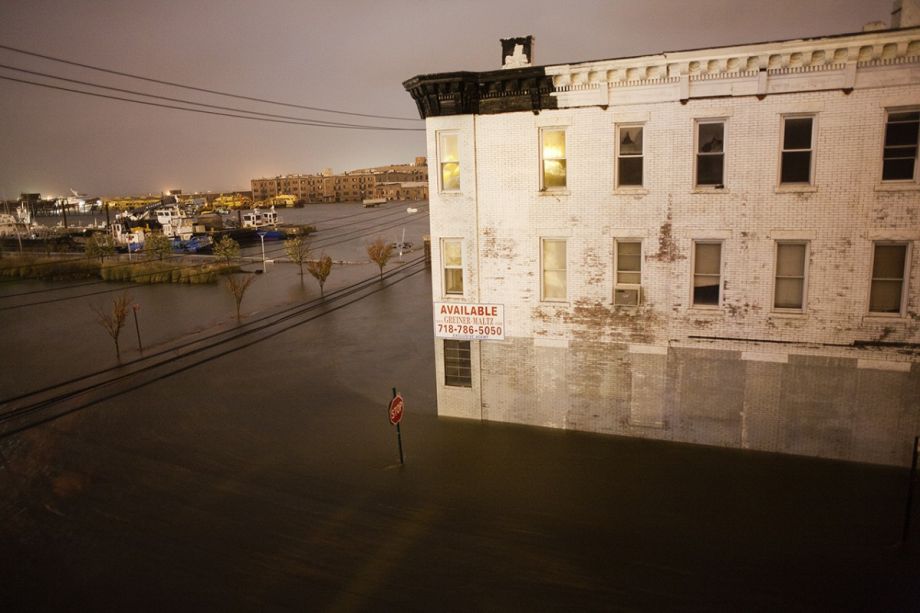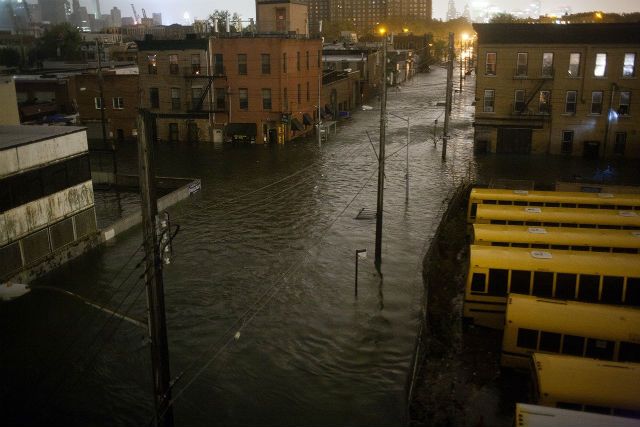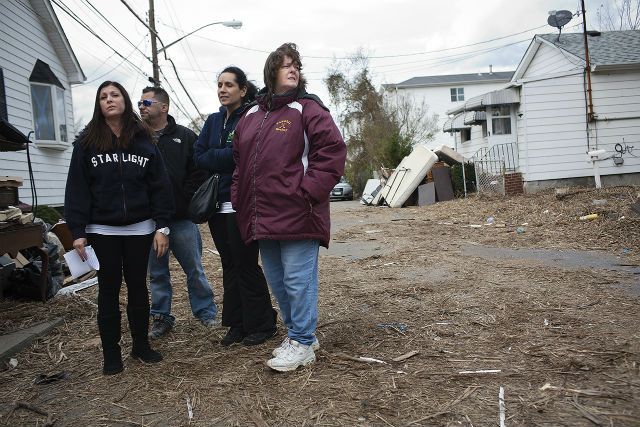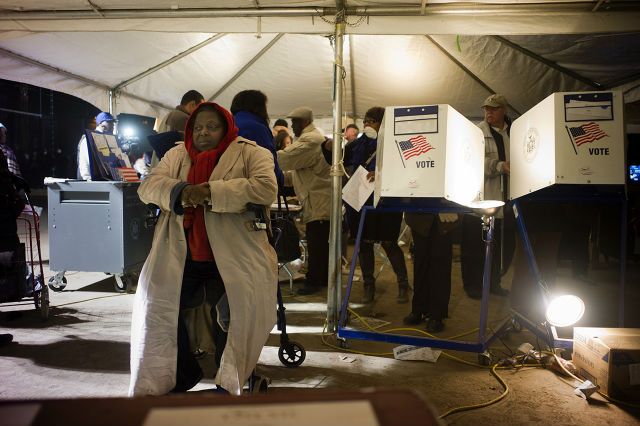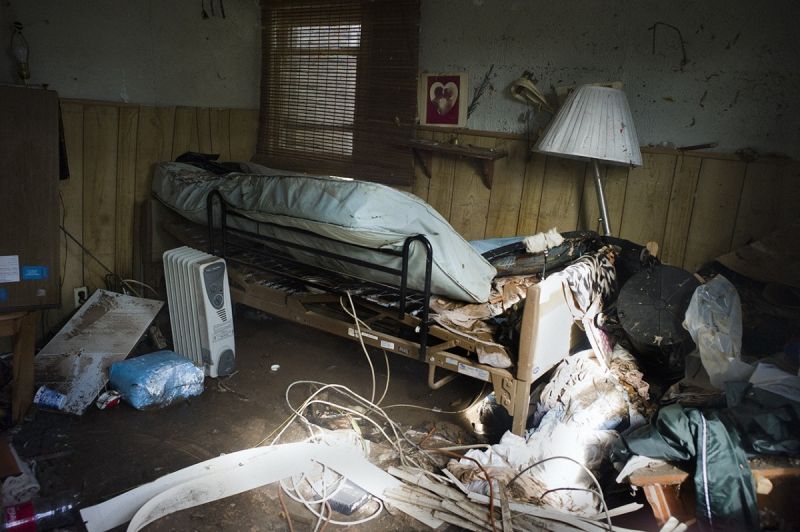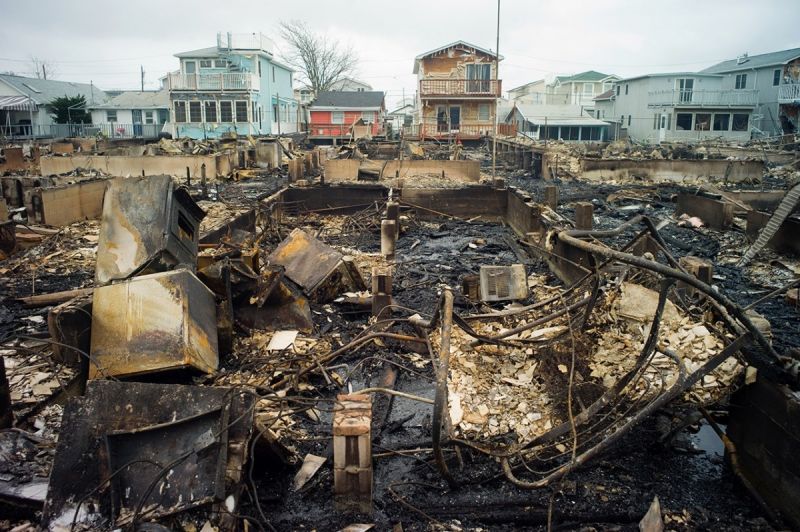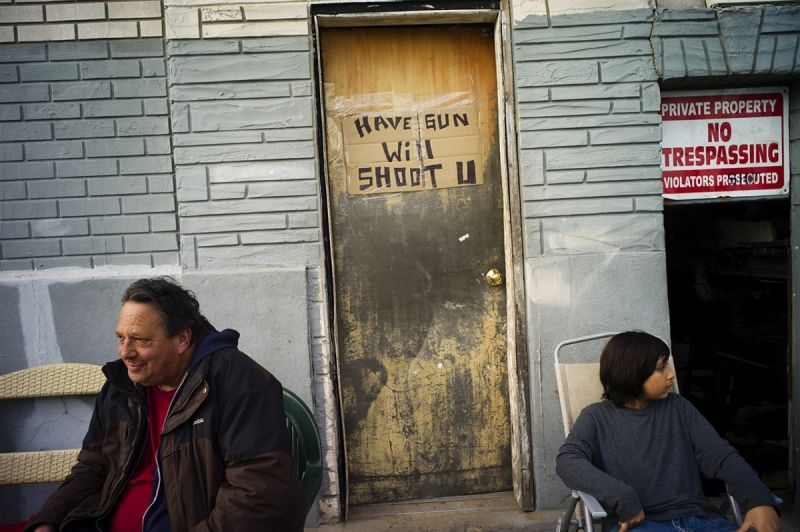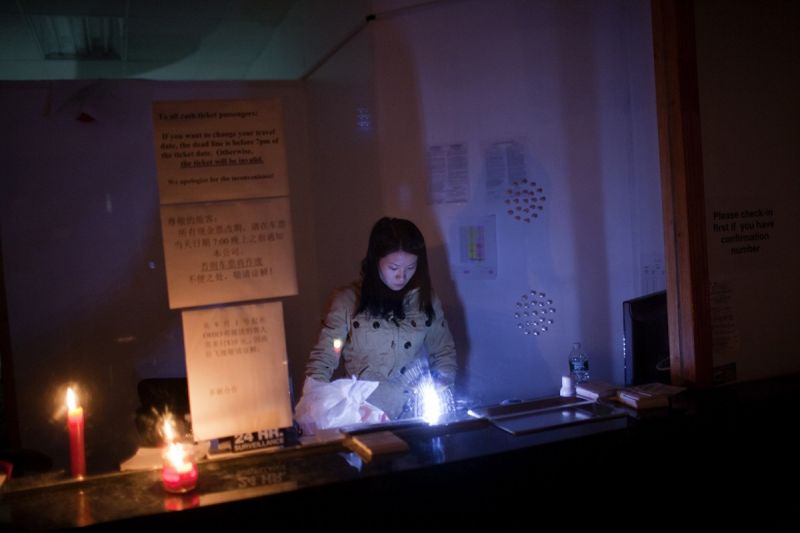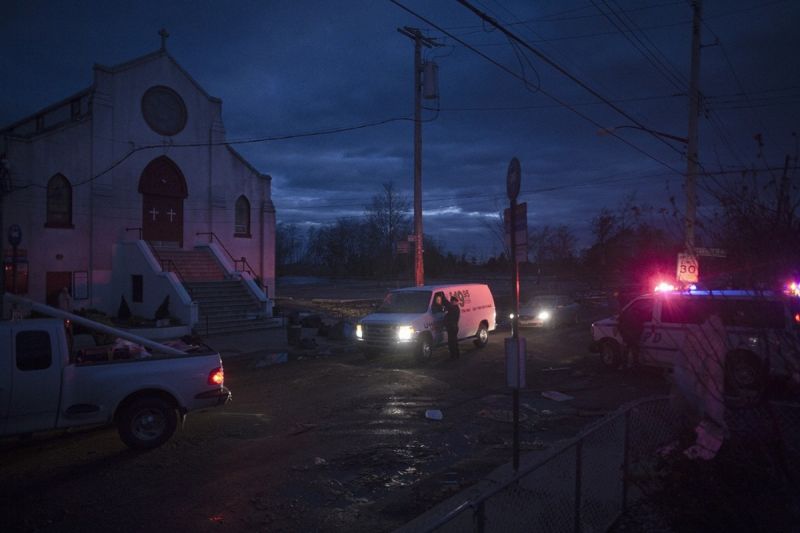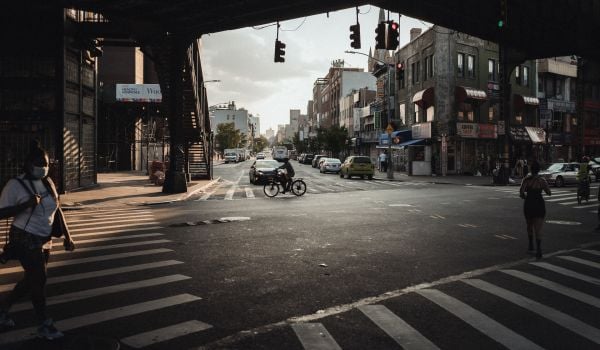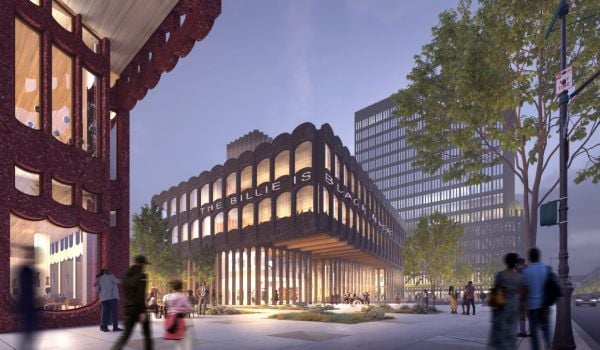Red Hook, Brooklyn is a mandatory hurricane evacuation zone, colored a lurid red and marked Zone “A” on all the emergency maps. Even ordinary rainstorms and nor’easters often drench basements and low-lying areas. So as Hurricane Sandy approached one year ago today, we taped up windows, drove cars up to high ground and, in my case, went back up to the third floor to watch the news and wait. I was the only one in my building who stayed to see Red Hook become a dark Venice.
The power went out after the wind picked up, and sheets of water played up and down the streets. Then, very quickly, the storm surged and most of Red Hook was under water in a few minutes. Cars left behind were fully submerged, with only their roofs visible. Thankfully, the flood washed out with the tide a few hours later. By dawn, Sandy was gone.
To understand the storm’s larger impact I started driving through Brooklyn and Queens. But it was only after crossing the Marine Parkway Bridge into the Rockaways that I saw the hard hit taken by New York City’s most seaward neighborhood.
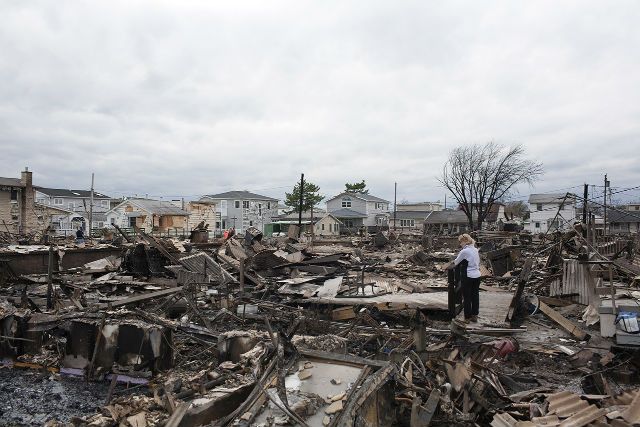
Fire, rather than flood, destroyed hundreds of buildings. Nursing homes had lost electricity, their evacuation plans either nonexistent or in disarray. Elderly residents in high-rise apartments were stranded. All of a sudden it was cold, and people without power or heat were huddled in front of garbage cans burning whatever they could find from the debris.
The next day it was Halloween, and a few brave costumed revelers did their best to celebrate on Rockaway Beach Boulevard. In the best of times, the Rockaways can have a forlorn feeling during autumn and winter, when the winds howl and the ocean crashes in. With the shattered boardwalk, only a few generator-powered emergency lights at night, and lines of shivering residents queued up for food and clothing, it felt like the end of the world.
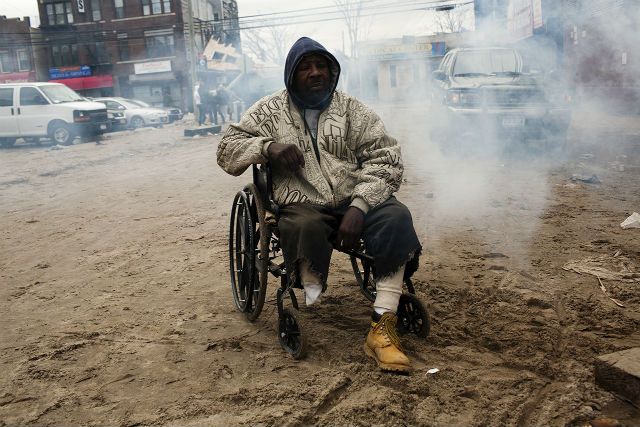
Then I went to Staten Island, where 23 people had died, more than half of the 43 total in New York City. If any part of the city resembled the aftermath of Hurricane Katrina, which I covered in 2005, it was Staten Island.
Luckily New York is above sea level, so there was no prolonged immersion. But just like in the Lower 9th Ward of New Orleans and along the Mississippi Gulf Coast, many houses were literally swept into the waves, leaving battered concrete foundations to mark the storm’s violence.
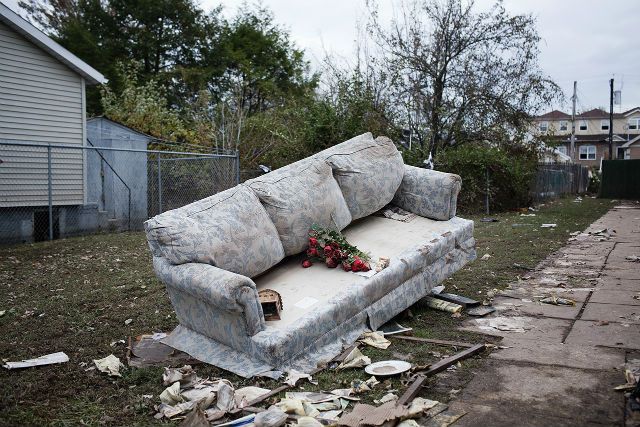
In the Midland Beach neighborhood, roses lay on a sofa in front of Beatrice Spagnuolo’s house, where the 79-year-old widow drowned despite her daughter’s best efforts to rescue her. A wrecked SUV marked the spot where Glenda Moore ended up on the waterfront. She had panicked and fled her home on high ground during the height of the storm with her two sons, Connor, 4, and Brandon, 2. Their car got caught in the storm surge and the two children died.
Day after day, I drove out with colleagues to document the storm’s destruction. Fuel ran short and we carpooled to stretch out our remaining gasoline. Half of Manhattan was blacked out for more than a week, but I barely noticed because we were at the edges of the city where the lack of power was a given. Election Day proved that improvisation works if organized well — voters cast ballots in tents using flashlights, having found their impromptu polling stations by reading handwritten notices.
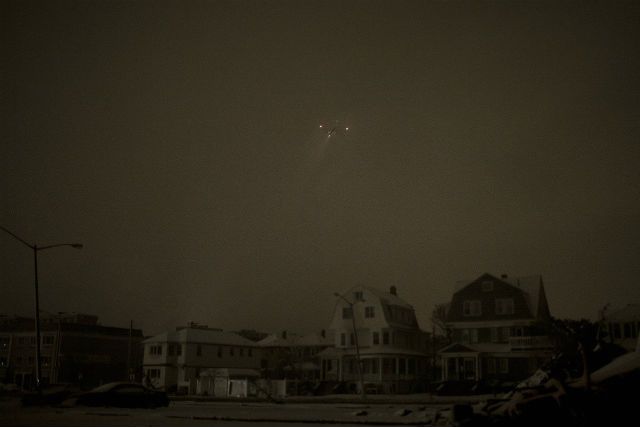
Then came the first snowstorm. In the Rockaways there was not a soul to be seen except for a lone police car’s flashing lights. It was absolutely silent except for the roar of jet planes continuing to take off and land from Kennedy Airport.
Thousands of people have yet to return to fully repaired or rebuilt homes. Mourning for the dead continues, and uncertainty for the next storm looms in our era of global warming. But for most New Yorkers a year later, Hurricane Sandy might seem an alien and strange experience outside of ordinary time. Not forgotten, but surreal: The idea that millions were without power, water or Internet; that gas lines rivaled the 1970s oil crisis; that young activists of Occupy Sandy were surprisingly quick and useful; that, for a few hours, I lived in Venice.
Gallery: Sandy One Year Later
All photos by Alan Chin.

Alan Chin was born and raised in New York City’s Chinatown. Since 1996, he has worked in China, the former Yugoslavia, Afghanistan, Iraq and Central Asia. Domestically, Alan has followed the historic trail of the Civil Rights movement, documented the aftermath of Hurricane Katrina and covered the 2008 presidential campaign. He is a contributing photographer to Newsweek, the New York Times and BagNews, an editor and photographer at Newsmotion and a photographer at Facing Change: Documenting America (FCDA). Alan’s work is in the collection of the Museum of Modern Art.

